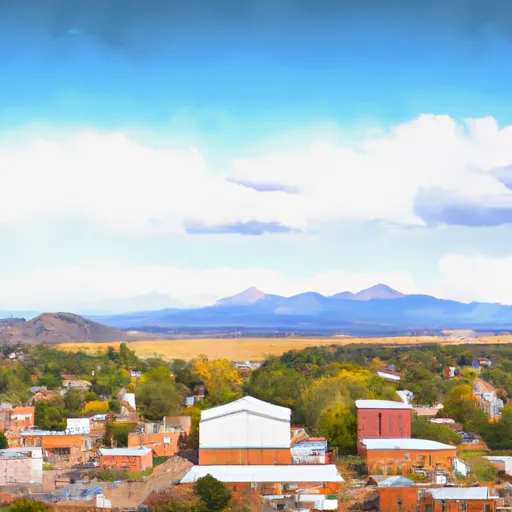-
 Snoflo Premium
Snoflo Premium
Get unlimited access to all our content
With no Ad interruptions! - Start Your Free Trial Login with existing account
La-Salle
Eden Index
Climate
8.5
•
Recreation
3.9
•
Community
2.2
•
Safeguard
5.3/10

LaSalle, Colorado is a small town located in Weld County, in the northeastern part of the state. The climate in LaSalle is characterized by hot summers and cold winters, typical of the region. Summers are generally warm with temperatures averaging in the 80s°F, while winters can be quite cold with temperatures dropping to the 20s°F. Precipitation is relatively low throughout the year, with most of it occurring in the form of snow during the winter months.
Hydrologically, LaSalle is situated near the South Platte River, which flows through the area. The river provides a vital source of water for the town's agricultural activities. Additionally, there are several irrigation ditches and reservoirs in the vicinity that contribute to the hydrology of the area.
For outdoor enthusiasts, LaSalle offers various recreational opportunities. The nearby South Platte River is popular among fishing enthusiasts, with ample opportunities for catching trout and other fish species. Additionally, the surrounding area offers opportunities for hiking, camping, and wildlife viewing. The nearby Pawnee National Grassland provides beautiful landscapes and opportunities for birdwatching, hunting, and horseback riding. With its diverse outdoor offerings, LaSalle is a great destination for those seeking to engage in various recreational activities in a picturesque setting.
What is the Eden Index?
The Snoflo Eden Index serves as a comprehensive rating system for regions, evaluating their desirability through a holistic assessment of climate health, outdoor recreation opportunities, and natural disaster risk, acknowledging the profound impact of these factors on livability and well-being.
Climate Health Indicator (CHI): 8.5
La-Salle receives approximately
350mm of rain per year,
with humidity levels near 50%
and air temperatures averaging around
10°C.
La-Salle has a plant hardyness factor of
5, meaning
plants and agriculture in this region thrive during a short period during spring and early summer. Most
plants will die off during the colder winter months.
By considering the ideal temperature range, reliable water supplies, clean air, and stable seasonal rain or snowpacks, the Climate Health Indicator (CHI) underscores the significance of a healthy climate as the foundation for quality living.
A healthy climate is paramount for ensuring a high quality of life and livability in a region, fostering both physical well-being and environmental harmony. This can be characterized by ideal temperatures, reliable access to water supplies, clean air, and consistent seasonal rain or snowpacks.
Weather Forecast
Streamflow Conditions
South Platte
Area Rivers
South Platte
Snowpack Depths
South Platte
Reservoir Storage Capacity
South Platte
Groundwater Levels
Recreational Opportunity Index (ROI): 3.9
The Recreational Opportunity Index (ROI) recognizes the value of outdoor recreational options, such as parks, hiking trails, camping sites, and fishing spots, while acknowledging that climate plays a pivotal role in ensuring the comfort and consistency of these experiences.
Access to outdoor recreational opportunities, encompassing activities such as parks, hiking, camping, and fishing, is crucial for overall well-being, and the climate plays a pivotal role in enabling and enhancing these experiences, ensuring that individuals can engage in nature-based activities comfortably and consistently.
Camping Areas
| Campground | Campsites | Reservations | Toilets | Showers | Elevation |
|---|---|---|---|---|---|
| Cherry Creek State Park | 102 | 5,646 ft | |||
| Missile Site Park | 12 | 4,942 ft | |||
| F.E. Warren AFB Crow Creek Military | None | 6,129 ft |
Nearby Ski Areas
Catastrophe Safeguard Index (CSI):
The Catastrophe Safeguard Index (CSI) recognizes that natural disaster risk, encompassing floods, fires, hurricanes, and tornadoes, can drastically affect safety and the overall appeal of an area.
The level of natural disaster risk in a region significantly affects safety and the overall livability, with climate change amplifying these risks by potentially increasing the frequency and intensity of events like floods, fires, hurricanes, and tornadoes, thereby posing substantial challenges to community resilience and well-being.
Community Resilience Indicator (CRI): 2.2
The Community Resilience Indicator (CRI) recognizes that education, healthcare, and socioeconomics are crucial to the well-being of a region. The CRI acknowledges the profound impact of these elements on residents' overall quality of life. By evaluating educational resources, healthcare accessibility, and economic inclusivity, the index captures the essential aspects that contribute to a thriving community, fostering resident satisfaction, equity, and social cohesion.

